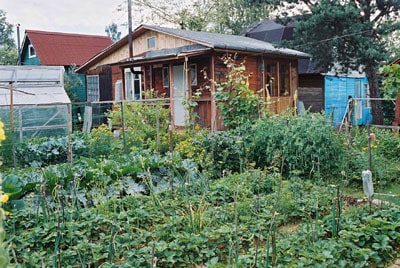I came across a great article about how fresh colorful vegetables offer the most nutrition for the money spent. While I definitely agree with this, I believe there are some lost opportunities here; namely growing your own vegetables will prove the truth of several recent findings. Below is the link for the article:
Fresh Vegetable Salads Provide Maximum Nutrition for Each Food Dollar Spent
The first finding is that fresh colorful vegetables have the most nutrition when compared to prepackaged and prepared foods. The second is that naturally grown chemical free vegetables have more minerals and nutrients as compared to conventional chemically grown ones. The third is that the dollar return on money spent for seeds to grow a vegetable garden- even a modest one- is staggering. Several articles I’ve read put the return from $100 in seeds at anywhere from $1000 to $1800 in fresh produce!
“Salads that offer the most nutrition for the money are made with fresh, unprocessed vegetables. Color is the key. Those veggies with the bright, vibrant colors are trying to tell you something. The more colors added to the bowl, the more the salad can keep you looking and feeling young, and put a bounce in your step for the rest of the day. That’s because vibrant colored veggies are loaded with antioxidants, plant compounds that slow the aging process and ward off disease.”
The more colors in the vegetables you eat, the more different types of nutrients, minerals and other vitamins that you get. This is a great start!
“All of these varieties are excellent sources of Vitamins A, E and K. Vitamin A supports eye and respiratory health, and makes sure the immune system is up to speed. It keeps the outer layers of tissues and organs healthy, and promotes strong bones, healthy skin and hair, and strong teeth. Vitamin E slows the aging process, maintains positive cholesterol ratios, provides endurance boosting oxygen, protects lungs from pollution, prevents various forms of cancer, and alleviates fatigue. Vitamin K keeps blood vessels strong and prevents blood clots.
Greens are also excellent sources of folate, manganese, chromium, and potassium. Folate prevents heart disease, defends against intestinal parasites and food poisoning, promotes healthy skin, and helps maintain hair color. Manganese keeps fatigue away, helps muscle reflexes and coordination, boosts memory, and helps prevent osteoporosis. Chromium helps normalize blood pressure and insulin levels. It prevents sugar cravings and sudden drops in energy. Potassium regulates the body’s water balance and normalizes heart rhythms. It aids in clear thinking by sending oxygen to the brain.”
Now if we take this a step further and grow these vegetables ourselves, or at least buy them locally- from the farmers market or “our” farmer/gardener/neighbor that grows way too much to eat themselves- we can stack the advantages of the nutrition in our favor.
Several recently released studies show what is at first glance somewhat common sense- naturally grown vegetables have more nutrients, vitamins and minerals than those grown in the conventional chemically grown manner. The common sense part comes from the fact that chemical agriculture on any scale depends on very few chemicals- NPK familiar to anyone? Nitrogen, phosphorous and potassium are important, but they aren’t the only elements that plants need to grow and produce healthy fruits and vegetables. One study I’ve read showed that a naturally grown vegetable had 84 minerals and elements that were identified as opposed to 8-10 in the same exact vegetable planted from seeds from the same seed packet but grown conventionally with the standard chemical fertilizers and pesticides/herbicides. Something to note- the test didn’t identify the negative elements in the vegetables- such as chemical residues.
Which do you think has better nutrition, which has better taste, and which would you want to eat or serve as dinner to your family?
Continuing the stacking of benefits idea- this is the introduction to the article:
“It looks like food prices will continue to creep steadily higher throughout 2009, even in the face of an economic crisis that has reduced the purchasing power of most Americans. This makes it more important that ever to get the best nutritional value for every food dollar spent.”
I agree completely with this, and seeing this at the end of 2009, the truth of the cost of food vs purchasing power is apparent. What if we can turn this truth around, and make it pay instead of save money? That’s an exciting idea, as saving money is good, but saving in this case is only a stop to spending money. Growing a garden can actually pay you! It is truly not very difficult to grow a garden that produces more than you and your family can eat. Sell the excess, make some money! Farmers and local markets are the fastest growing segment of agriculture for the past several years. Most have a booth just for the backyard gardener to sell/trade their abundance.
Or trade it to your neighbor in return for services or something you need. This won’t give you dollars, but will give you something of value that you didn’t have to spend dollars to obtain.
Or donate some to your local food bank/soup kitchen/Meals on Wheels/etc. Again, not dollars, but karma is good too. So is the increased community that you’ve just created that can help you in ways unforeseen right now.
Now please don’t misunderstand me. I really like the article! I think that there are some ways to capitalize on a good idea and great benefit to achieve much greater results for all of us. Please take the time to read the entire article.



